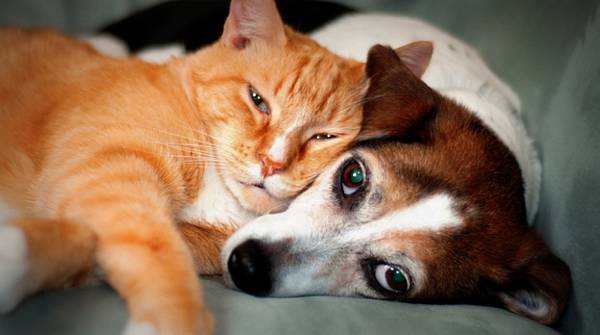Four Stages of Periodontal Disease in Pets
Periodontal disease is an infectious inflammatory and typically a progressive disease that comes from lack of pet dental care. Read on to find out the signs and treatment of each of the four stages.
Stage 1: Mild Gingivitis and Plaque
The gums are inflamed but there is no evidence of support loss. Treatment involves plaque and calculus removal plus daily plaque prevention.
Stage 2: Moderate Gingivitis
In stage two periodontal disease (“early periodontitis”), the tooth begins to lose its support. Treatment involves removal of plaque and calculus, specific periodontal therapy based on examination findings as well as daily plaque prevention.
Stage 3: Severe Gingivitis
In stage three periodontal disease (“established”), the loss of tooth support has progressed. Advanced periodontal procedures and stringent plaque prevention may result in saving a tooth.
Stage 4: Severe Periodontal Disease
Periodontal disease is full blown and the animal is at risk of loosing teeth. Extraction is the recommended treatment of choice.The pet in photo above runs the risk of toxin absorption into the blood stream. Bacteria, too, can invade the body through the blood stream by gaining entrance into the oral lesions. This is called bacteremia. If the bacteria get a chance to settle and reproduce in the lining of the heart or heart valves, a serious condition may result called bacterial endocarditis. Kidney damage and joint problems are common to bacterial invasion via the unhealthy oral cavity.
Pet dental care is not just a new fad. Dental health is also not just all about objectionable bad breath or halitosis. Dental infections are the most common type of infections treated by veterinarians! This silent infection eventually overwhelms your pet’s immune system and leads to whole body disease affecting many major organs, like the kidneys, the liver, the heart and the lungs lending to a shorter life span.
Here are a few preventative care tips for you and your pet:
- Brush your pets teeth twice a week.
- Schedule yearly check ups.
- Use preventative dental hygiene products.
Wondering what products you should use? Check back next week for what NOT to use!










1 thought on “Periodontal Disease in Dogs and Cats”